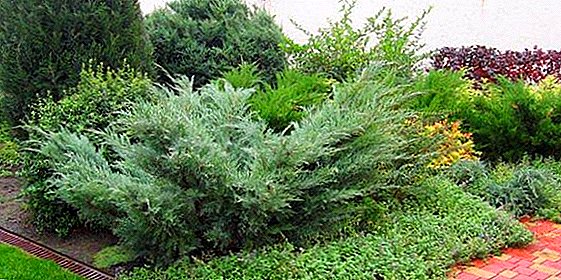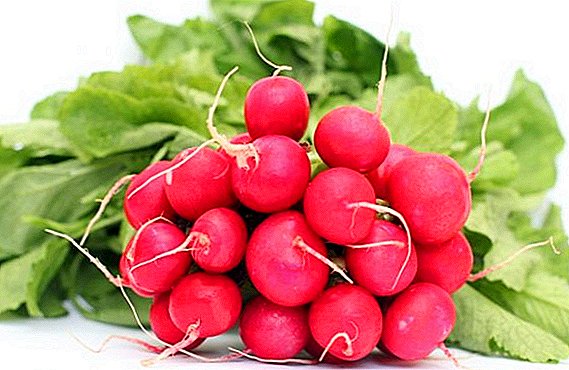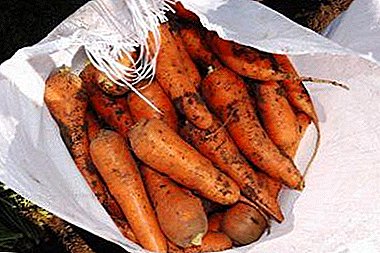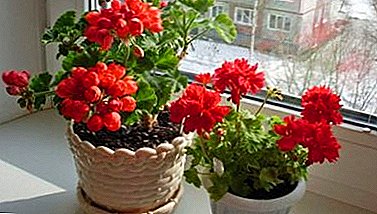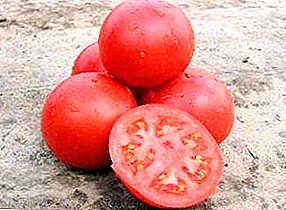
Tasty, fruitful pink fruit hybrids are welcome guests in vegetable gardens and greenhouses.
A vivid representative of this category is the Tarpan F1 variety of tomatoes. Selected tomatoes of this variety are suitable for salads, various dishes and canning.
If you want to know more about Tarpan tomatoes, read our article. In it we will present for you a detailed description of the variety, we will introduce you to its characteristics and cultivation features.
Tarpan: variety description
| Grade name | Tarpan |
| general description | Early ripe high-yielding determinant hybrid |
| Originator | Holland |
| Ripening | 98-105 days |
| The form | Flat-rounded, with a slight ribbing near the stem |
| Colour | Dark pink |
| Average tomato mass | 65-190 grams |
| Application | Universal |
| Yield varieties | up to 12 kg per square meter |
| Features of growing | Agrotechnika standard |
| Disease resistance | Resistant to major diseases of Solanaceae |
 Tomatoes "Tarpan" f1 (F1) is a high-yielding early ripe hybrid. Bush determinant, compact. The formation of moderate green mass, leaves are light green, simple, medium size. The fruits ripen with brushes of 4-6 pieces. Productivity is high, up to 12 kg of selected tomatoes can be collected from 1 square meter.
Tomatoes "Tarpan" f1 (F1) is a high-yielding early ripe hybrid. Bush determinant, compact. The formation of moderate green mass, leaves are light green, simple, medium size. The fruits ripen with brushes of 4-6 pieces. Productivity is high, up to 12 kg of selected tomatoes can be collected from 1 square meter.
Fruits of medium size, weighing from 65 to 190 g. In closed soil, tomatoes are larger. The shape is flat-rounded, with a slight ribbing near the stem. In the process of ripening, the tomatoes change color from light green to solid dark pink.
The skin is dense, but not rigid, perfectly protecting ripe fruits from cracking. The pulp is sugary, juicy, dense, with a large number of seed chambers. Taste is saturated, sweet.. The solids content reaches 6%, sugar - up to 3%.
Compare the weight of the fruit with other varieties can be in the table below:
| Grade name | Fruit weight |
| Tarpan | 65-190 grams |
| Sensei | 400 grams |
| Valentine | 80-90 grams |
| The Tsar Bell | up to 800 grams |
| Fatima | 300-400 grams |
| Caspar | 80-120 grams |
| The Golden Fleece | 85-100 grams |
| Diva | 120 grams |
| Irina | 120 grams |
| Batyana | 250-400 grams |
| Dubrava | 60-105 grams |
Origin and Application
The hybrid of the Dutch selection, is intended for cultivation in regions with a warm or temperate climate. Harvested tomatoes are well stored, transportation is possible.. Green fruits ripen quickly at room temperature.
Fruits can be used fresh, used for cooking various dishes, canning. Ripe tomatoes make a delicious thick puree, as well as rich sweet juice.
 Read also on our website: Secrets of growing early ripe tomatoes. How to get a good harvest in the open field?
Read also on our website: Secrets of growing early ripe tomatoes. How to get a good harvest in the open field?What tomatoes have high yields and are disease resistant?
A photo



Advantages and disadvantages
Among the main advantages of the variety:
- beautiful, juicy fruits with delicious taste;
- a high percentage of conditioned fruits (up to 97);
- excellent yield;
- compact bushes save space on the beds;
- possible thickening during planting, not reducing yield;
- collected fruits are well kept;
- resistance to the main diseases of tomatoes in greenhouses.
Deficiencies in the variety is not seen.
You can compare the yield of a variety with others in the table below:
| Grade name | Yield |
| Tarpan | up to 12 kg per square meter |
| Bobcat | 4-6 kg from a bush |
| Rocket | 6.5 kg per square meter |
| Russian size | 7-8 kg per square meter |
| Prime minister | 6-9 kg per square meter |
| King of Kings | 5 kg from a bush |
| Stolypin | 8-9 kg per square meter |
| Long keeper | 4-6 kg from a bush |
| Black bunch | 6 kg from a bush |
| Grandma's Gift | 6 kg per square meter |
| Buyan | 9 kg from a bush |
Features of growing
 Like other early ripening varieties, Tarpan is sown on seedlings in early March. Seeds do not need processing or soaking, before selling they go through all the necessary procedures. The soil for planting is composed of a mixture of sod or garden soil with humus. Seeds are sown with a depth of 2 cm and abundantly sprayed with warm water.
Like other early ripening varieties, Tarpan is sown on seedlings in early March. Seeds do not need processing or soaking, before selling they go through all the necessary procedures. The soil for planting is composed of a mixture of sod or garden soil with humus. Seeds are sown with a depth of 2 cm and abundantly sprayed with warm water.
After the emergence of shoots containers are exposed to bright light. Watering is moderate, it is better to use a spray or a watering can, drip watering.
When the first pair of true leaves unfolds on the plants, the seedlings swoop in separate pots, and then feed them with complex fertilizer.
Landing in the ground or greenhouse begins when the soil is fully warmed. For 1 sq. M can accommodate 4-5 miniature bushes. The lower leaves are removed for better insolation, nip side shoots after 4 brushes are possible.
Tomatoes are watered as the topsoil dries, with warm settled water. During the season, plants are fed 3-4 times, alternating mineral complexes and organic fertilizers..
 Read also on our website: Top best fertilizers for tomatoes. What types of soil for tomatoes in greenhouses exist?
Read also on our website: Top best fertilizers for tomatoes. What types of soil for tomatoes in greenhouses exist?Why growth stimulants, insecticides and fungicides in the garden?
Diseases and pests
The Tarpan tomato hybrid is resistant to the main diseases of the nightshade: tobacco mosaic, verticillosis, fusarium. However, preventive measures should not be neglected. Before planting the soil is recommended to shed a solution of hydrogen peroxide or copper sulfate.
Plantings are regularly sprayed with phytosporin or another non-toxic bio-drug with antifungal and antiviral effects. At the first signs of late blight, the affected plants are treated with copper-containing preparations.
Planting should be protected from pests. In the blooming phase, thrips and spider mites annoy the tomatoes; aphids, bare slugs, Colorado beetles appear during fruiting. To get rid of insects will help regular weeding, mulching the soil with straw or peat.
Variety of tomato "Tarpan" - a great choice for a novice or experienced gardener. A few bushes will take up little space, but they will certainly please with a bountiful harvest. Plants are less prone to disease and do not require special care.
Useful information in the video:
| Early maturing | Middle late | Medium early |
| Crimson Viscount | Yellow banana | Pink Bush F1 |
| The Tsar Bell | Titanium | Flamingo |
| Katya | F1 slot | Openwork |
| Valentine | Honey salute | Chio Chio San |
| Cranberries in sugar | Miracle of the market | Supermodel |
| Fatima | gold fish | Budenovka |
| Verlioka | De barao black | F1 major |



